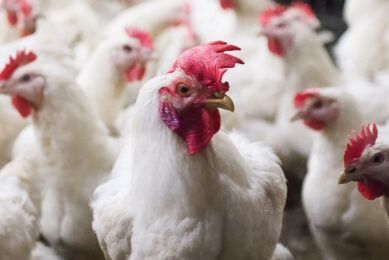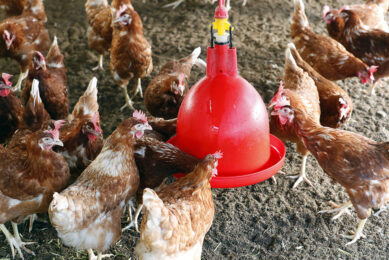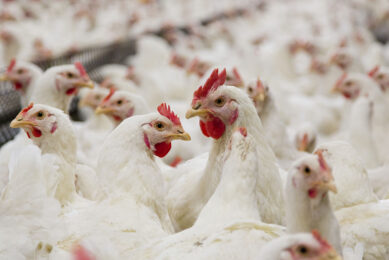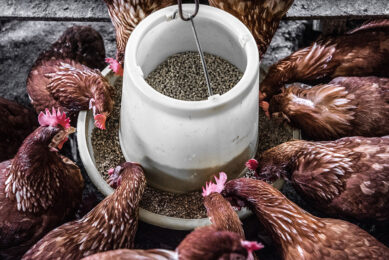Copper: Nutrient, anti-nutrient and antibacterial for poultry
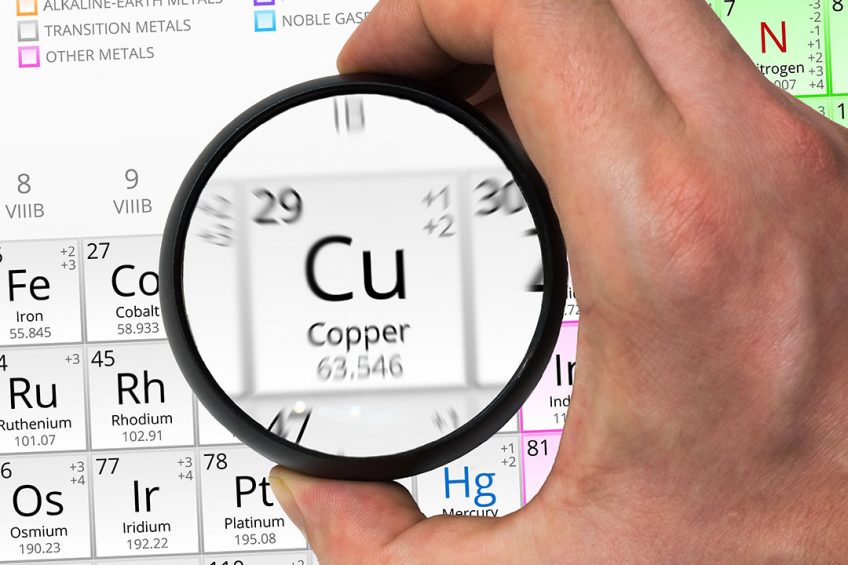
Inclusion of copper in animal diets is common practice. Nevertheless, there are several factors to consider. Here is an overview.
Copper was first shown to be an essential nutrient for sustaining haemoglobin levels, even though blood contains little copper. Interest in copper nutrition intensified in the 1930s when it was demonstrated that certain cattle diseases were shown to be caused by a copper deficiency. These early studies led to extensive mapping of copper deficient areas around the globe and subsequently the use of copper in animal diets.
Copper requirement
Copper requirements usually fall within the range of 4 – 8ppm. Copper (Cu) can exist in 3 states of oxidation with 2 variants and so reactivity with other ions is inevitable but variable. We can use this reactivity to develop “organic” forms of copper. The main function of Cu is as a cofactor in critical enzymes in blood and tissues. Deficiency signs range from anaemia to inadequate cartilage formation. While there is quite efficient recycling of Cu by the kidneys, there is poor recycling from bile and so bile is the main route for clearance when dietary supply exceeds demand. Very high copper levels are sometimes used as an antibacterial, where levels approach 25 – 40 x the normal requirement.
Copper sources
Copper sulphate is often the standard, although copper chloride, oxide, and carbonate are also available commercially. Over the last few years 2 other issues have arisen which have refuelled interest in copper source and bioavailability. So called organic sources of copper, which are usually attached to amino or organic acids, have rekindled interest in the bio-efficacy of mineral supplements.
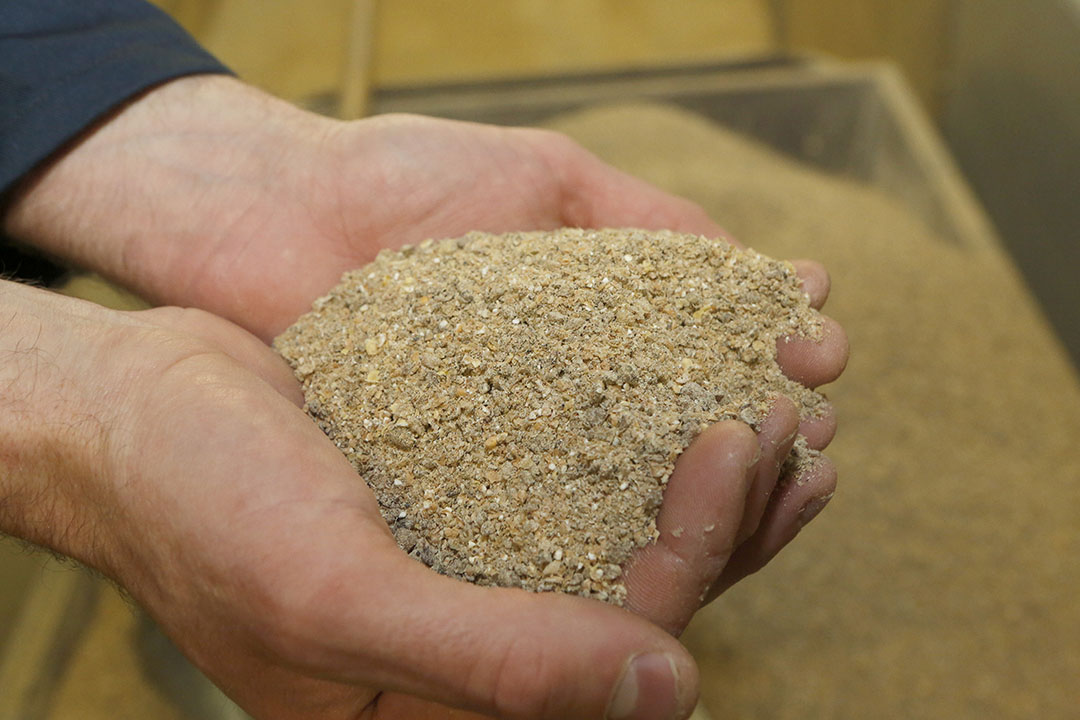
Copper availability
The other more recent area of interest is consideration of the availability of minerals such as copper in natural feed ingredients. Traditionally requirements for Cu are met entirely by supplements with no account of the mineral present in cereals and proteins. This recent interest stems from attempts to minimise the nutrient supply of Cu and other minerals as a means of reducing manure levels and so addressing environmental concerns. While it is easy to measure total levels of Cu in major ingredients, measuring bioavailability is a complex procedure.
Bioavailability of Cu
A broiler starter diet will normally provide around 150% of the Cu requirement. However, the proportion that is available to the bird is variable due to farming conditions when growing maize and soya and the prior nutritional status of animal proteins. Bioavailability will be affected by parameters used in estimation, which for Cu seem to range from simple production characteristics through to liver and bile accumulation indices. The bioavailability of Cu in wheat and maize seems to be around 80% while values are closer to 40% for SBM. These lower levels may be due to greater binding of Cu with phytate, and so availability may be higher when using phytase. Copper sulphate and copper oxide have been traditional sources of supplemental copper, and although bioavailability values depend on numerous factors, both sources average around 65 – 75%. Tribasic copper chloride (TBCC) is now often used commercially as it has no issues with hygroscopicity.
Efficacy of products termed ‘organic copper’
There is also considerable interest in the testing efficacy of products loosely termed ‘organic copper’, which are usually combined with amino acids or proteins. It is often claimed that these minerals are preferentially absorbed and metabolised and provide less opportunity for interference with other minerals. There have been reports of very low levels of these organic minerals being adequate for poultry with a view to reducing mineral excreta output.
Copper deficiency
Copper deficiency results in anaemia, growth depression, bone disorders, depigmentation of feathers and diarrhoea. Young chicks will become lame in 2 to 4 weeks when fed a copper-deficient diet. Bones are fragile and easily broken and this is unfortunately often indistinguishable from Vitamin A deficiency. Iron deficiency, resulting in a comparable anaemia, fails to produce similar bone changes. With deficiency, the cartilage is found to contain more free lysine, which under normal conditions binds to form important cartilage structures. The metabolic activity of this abnormal cartilage resembles that seen in situations of tibial dyschondroplasia. Both copper and iron deficiencies have been reported to result in loss of feather pigmentation in coloured chickens and bronze turkeys. Poults are especially susceptible, exhibiting depigmentation within 10d of feeding a Cu-deficient diet.
Chicks hatched from copper-deficient hens lack critical enzymes in the aorta and liver. The heart problem seems similar to the mechanism involved in abnormal cartilage formation, so the aorta becomes inflexible. In turkeys this can lead to symptoms similar to ‘aortic rupture’. Again, there are diagnostically high levels of free lysine in the affected aorta. In field cases of naturally occurring aortic rupture, many birds have <10 ppm Cu in the liver, compared to the 15 – 30 ppm that is found normally. A high incidence of aortic rupture has been seen in turkeys fed 3-nitro, although this problem could be resolved by feeding higher levels of copper, suggesting that products such as 3-nito may simply combine with copper in the digesta. While Cu-deficient chicks have a drastically reduced growth rate, their aortas can be double the normal size.
Toxicity
Toxicity occurs when dietary levels approach 100 x normal. Initially, accumulation occurs in the liver, but after these levels reach 20 – 25 x normal, then Cu is released into the circulation, leading to destruction of red blood cells. No major feed ingredients are sufficiently high in Cu to cause toxicity. Toxicity has also been implicated in proventriculitis and gizzard erosion, together with black discolouration of the manure. Birds with sub-clinical cocci seem more prone to such gizzard erosion. Researchers suggest that the condition is almost always seen in experimentally caged broilers, but less so in floor reared birds, suggesting some protection with diet fibre/litter eating. Other reports suggest that such Cu-induced gizzard erosion can be partially resolved by adding extra selenium to the diet. There is little information available on any negative effect of high doses of copper on the activity of live probiotics.
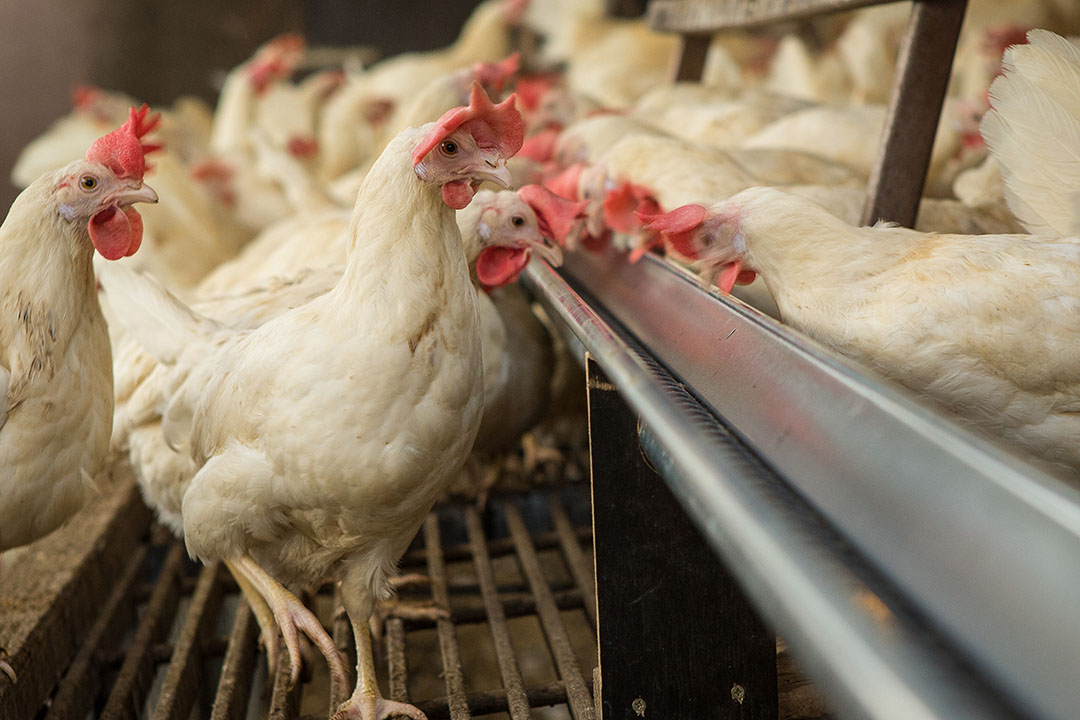
Mineral interactions
Interaction between copper and zinc, iron and molybdenum are often described as classical examples of mineral interactions. A large proportion of copper is absorbed from the duodenum. Because zinc also binds aggressively to the same mucosal carrier, high levels of dietary zinc cause competition, leading to copper deficiency, although this is hard to diagnose, since the diet contains normal levels of copper. The commercial practice of using pharmacological levels of diet Cu for growth promotion in meat birds has been questioned in terms of compatibility with phytase enzymes. High levels of dietary Cu result in reduced solubility of phytic acid, which may impact enzyme activity. There has been some controversy regarding the impact of high levels of Cu on requirements for certain amino acids. The growth rate of chicks depressed by feeding 500 – 700 mg/kg dietary Cu is alleviated by feeding extra DL-methionine. When pharmacological levels of copper are used in broiler production, it is common practice to add extra methionine.
Impact of copper on cholesterol metabolism
Moderately high levels of diet Cu seem to have a consistent effect on reducing egg cholesterol content. Feeding 125 – 250 ppm of copper has been reported to reduce egg cholesterol by up to 25%. Unfortunately, the changes to yolk formation means loss in egg production, often by a comparable 25%. The only consistent result from studies using copper to affect egg cholesterol, is that >95% of the additional copper ends up in the manure. Tissue cholesterol of meat birds is also reduced when birds are fed 250 ppm Cu.
Copper as an antibacterial
High levels of copper are still used as a growth promoter, at 200 – 250 mg/kg diet, although the accumulation of copper in manure is leading to legislative restrictions. The manure colour of the bird changes markedly, and it is presumed that there will be some changes to the gut microflora. In turkeys, high levels of diet Cu cause greater evacuation of faecal droppings that have higher viscosity and contain up to 12,000 ppm of Cu. It has been suggested that the beneficial effect of feeding pharmacological levels of Cu may result from 10-15% improved digestion of haemicellulose. The best results from feeding high levels of Cu seem to occur after 2 to 3 flocks have been grown on re-used litter, implying the altered microbial status of the litter. When much in excess of 50 ppm copper is fed, most of the mineral will end up in the manure. There is no doubt that manure as a fertiliser from birds fed high levels of Cu increases the soil Cu. However, calculation of levels of soil and crop accumulation suggest that it takes many years to approach EPA “saturation” levels, and so the main current concern is “run-off” from soil into watersheds. On the other hand, high levels of manure Cu suppress microbial uricase activity, limiting ammonia release.
Conclusions
The minimum dietary requirements for Cu for poultry are around 5 – 8 ppm. Success with low levels of supplemental Cu (2-3 ppm) seem predicated on proportional reduction of all trace minerals and not Cu in isolation. When lower levels of Cu are considered as a means of reducing environmental pollution, then the bioavailability of Cu in conventional diet ingredients needs to be considered. If there is a need to reduce Cu levels in manure, then there needs to be an evaluation of Cu bioavailability in the 6 to 8 major feed ingredients used worldwide. Often >90% of Cu consumed will appear in the manure, where soil accumulation is less problematic than the potential leaching of Cu into watercourses.




